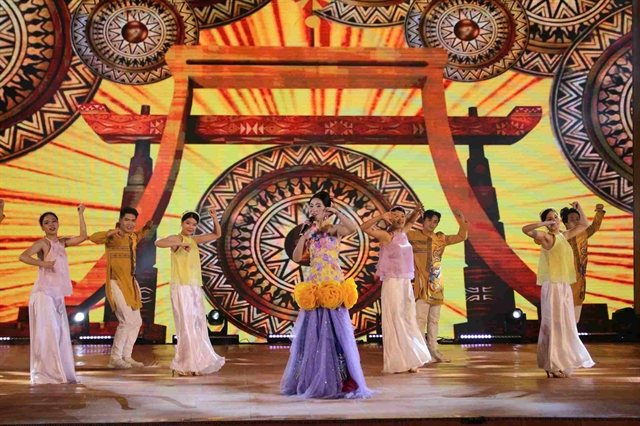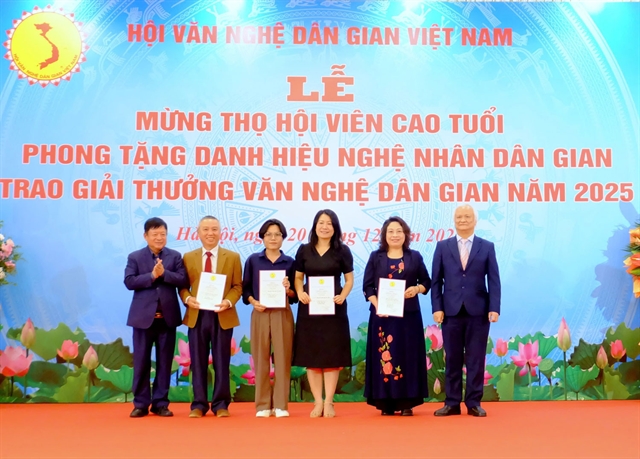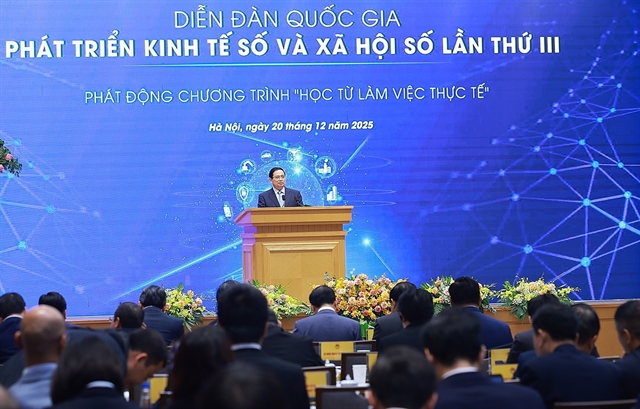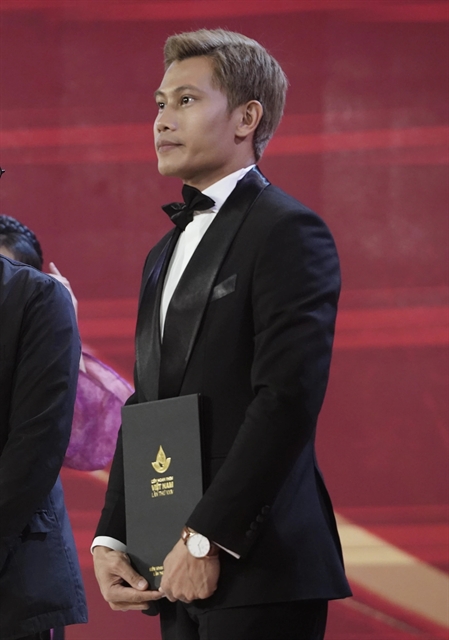 Inner Sanctum
Inner Sanctum
.jpg)
Dr Nguyễn Thế Hoàng, Deputy Director of Surgery at Central Military Hospital 108, led a team of four top surgeons to successfully graft a left forearm for a man, who lost his hand in an accident at work four years ago.
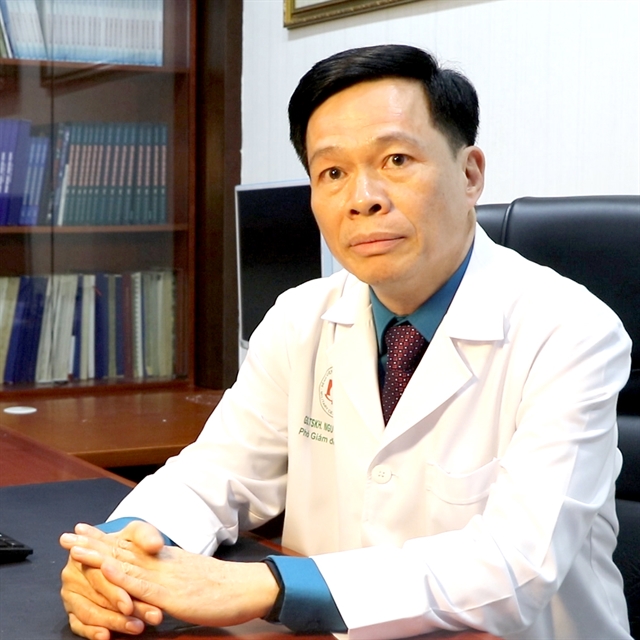
|
| Dr Nguyễn Thế Hoàng |
Dr Nguyễn Thế Hoàng, Deputy Director of Surgery at Central Military Hospital 108, led a team of four top surgeons to successfully graft a left forearm for a man, who lost his hand in an accident at work four years ago.
"Every night, when I woke up and could not see my left hand, I fell asleep dreaming that it would come back one day," said mechanic Phạm Văn Vương, 31.
Vương actually did wake up one day, just over a month ago, to see his left hand again, not the one he was born with, but a new one, from a donor, who was more than happy to offer it to someone and give it a new lease of life. Prof Nguyễn Thế Hoàng tells Việt Nam News how it was done.
Inner Sanctum: Could you share your thoughts on the success of the operation, which took place on January 21?
It's been six weeks since the operation. The operation itself and the healing process have been positive. Every step of the way has been as we expected. I am glad that our patient is recovering well.
The grafted hand shows good signs of recovery. The fingers can move, which means the muscles are working. Right after the operation, his fingers could move a bit. Now they can hold hard objects in his palm or a bouquet of flowers. It's significant progress.
Back in 2008, I was one of the main surgeons performing at double arm transplant at the Retchs der Isar University Hospital at Technical University Munich. It was a milestone operation, which gave the patients two arms, bringing back for him the functions, aesthetics and the fuller feeling of a human body. Ever since then, I have been working toward making limb transplants a reality for our patients in Việt Nam.
When I came back from Germany, I had meetings with the then hospital Board of Directors, but we had to wait until 2016, when Central Military Hospital 108 received a licence to perform human organ transplants, and we started working on a plan to set up a Human Tissue and Organ Transplant Centre at Hospital 108.
Led by Prof Mai Hồng Bàng, general director of Hospital 108, who also chairs the project, we set up teams for transplant operations and sent them to transplant centres around the world to hone their skills. Our teams went to Hôpital Foch in France, Pusan National University Hospital, Kyoto City Hospital and Chang Gung Memorial Hospital in Taiwan.
The first kidney transplant took place in 2016, and gradually, this has become a frequent procedure at our hospital. Next we did liver transplants with the help of Korean doctors. Now it's also a common procedure with live donors. We also had emergency liver transplant cases, which were also successful.
In 2018, we transplanted lungs for the first time. It was quite remarkable because the operation was conducted on a conference call.
After these procedures, our operating teams have matured, mastered the techniques, and better used anti-graft medication. We have got valuable experience. Especially last year, our hospital completed a brand new building with 2,000 beds with the best operation rooms and facilities.
This operation for the first hand transplant was from a living donor. With the current success of this operation, with complete support from the hospital's Board of Directors, we trust that more operations can be performed in the future.
In Việt Nam today, traffic accidents and work accidents result in many people losing their limbs. Some war veterans also lost arms and legs. At our hospital, we see these cases every week. This is definitely making us toss and turn, trying to figure out a solution to help our patients, giving them back their confidence and ability to work for themselves and their families.
Inner Sanctum: Why is it happening now?
It's very challenging to perform a transplant operation. You will need to work with many different structures. You need to recover the functions of the human body that are transplanted. You also need to graft different skins, blood vessels, nerves, bones and joint structures, body fat under the skin and other types of tissues, which means there are numerous risks. The risks of anti-graft reactions from donors are high so we have to use anti-graft medication after operation.
Another factor that patients need to face is the fact they would be using another person's limb, be that person still alive or dead. Moreover, long-term physical therapy is needed after a procedure.
But the top challenge and most difficult obstacle is finding a donor, which is extremely rare and hard to find. Following the popular thinking of our Oriental philosophy, social and cultural beliefs, people do not want to donate part or all of their limbs, which are the parts people can see. Medical ethics would never allow that to happen if the donor was still alive.
Even if you can find a committed organ donor who is brain dead, they would not agree to donate their limbs because they could not bear the psychological pain caused to their living loved ones knowing they would be going into the afterlife incomplete.
That's why limb donors are extremely rare.
Further more, when you perform a limb transplant, you'll need compatible donor-receiver features like skin colour, sex: you cannot transplant a woman's limb to a man or vice versa, and volume and size: you cannot transplant a small limb to a big body.
In conclusion, there are technical, anti-graft and post-operation recovery issues, but above all, the donor.
That's why we tell each other that these two people were born for each other. The donor was AB blood group and the recipient was group B, so it was possible. Both the donor and receiver shared similar features in skin colour, shape, and even their finger nails looked alike. This was nearly the perfect match.
But this was no accident. We had been planning since 2016. We had a list of patients who had lost limbs in different positions and had all the necessary tests ready for a transplant if we could find a donor.
Inner Sanctum: Were there any complications during the operation?
We had prepared thoroughly, and our surgeons had experience, so the procedure went really well. The decisive moment was when we compared medical records with transplant indicators. If all the requirements were met, then we would go ahead, if not, then we would not have performed the operation. The best news for us was the structures in the donor's limbs had stayed intact, despite the arm being wounded beyond repair. We were positive and went ahead with the surgery.
Inner Sanctum: How long after the surgery could you confirm the hand would live?
We operated on the 27th of the last lunar month. For three days before Lunar New Year, we checked carefully and found that it was being well nurtured with fresh blood, the veins were circulating well, and the palm was fair and healthy. At midnight, the hospital had a party for everyone who had stayed for the Lunar New Year. We went up to see Vương at 1am to wish him all the best for the New Year. I was very touched when Vương told me "This is a dream for me!"
A dream for a patient is the reality we doctors make happen. Truly, for us, a smile from a patient encourages us all. It was a moment to cherish. We hugged each other and wished Vương a brighter future.
Inner Sanctum: What was the first object he could hold after surgery?
The first object I tested his fingers with was a ping pong ball. Perhaps because I love playing ping pong after work here at the hospital, so the balls were available.
Inner Sanctum: Do you think he will be able to play ping pong with you some day?
He's right-handed, so yes, he will be able to play me. VNS
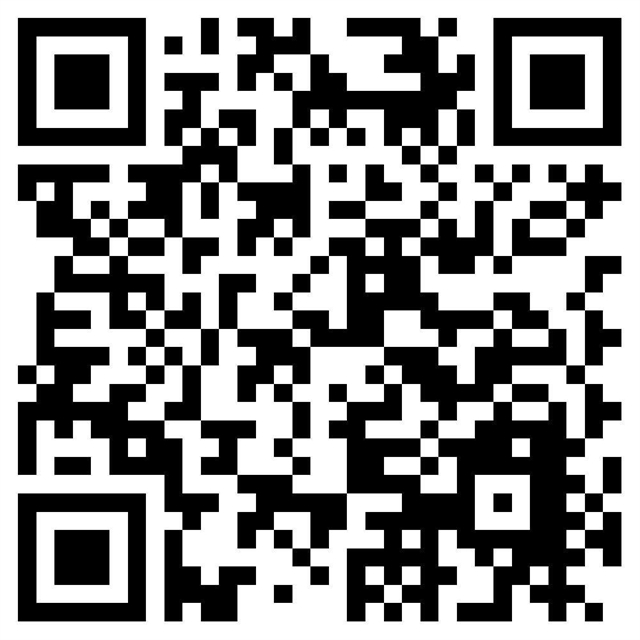
|
.jpg)
